I just got started with Core Data this week. Great question!
Relationships:
Since one patient can have many checkpoints, the Patient to Checkpoint relationship is a One to Many relationship. The concept of an "inverse relationship" is essentially this: You've got a relationship going one way (Patient to Checkpoint) - now go ahead and look at it from the inverse, the Checkpoint's perspective. A checkpoint can apply to only a single patient. Therefore, the Checkpoint to Patient relationship is a One to One relationship.
Inverse Relationships:
To handle the inverse relationship, simply create each relationship, ignoring the inverse. Then, after you have the relationship on each object, go ahead and define the inverse as the relationship on the other entity.
In other words, a relationship points to another entity or a group of entities. An inverse relationship points to a relationship on another entity.
Delete Rules:
As far as delete rules are concerned, it's fairly simple. When trying to delete a patient which has checkpoints...
- Deny: Core Data won't let you delete the Patient.
- Cascade: Core Data will delete the Entity (Patient), as well as cascading through relationships and deleting those objects as well. (In other words, Core Data will delete the Checkpoint objects too.)
- Nullify: Core Data will delete the patient but first remove the relationship. The Checkpoint will remain intact.
For the Patient entity might want either deny or cascade, depending on how you want to manage your data. Based on your usage case, you probably don't want nullify, since Checkpoints are dependent upon Patient entities.
You want nullify for the Checkpoint, since the Cascade would prevent you from deleting a checkpoint without deleting the entire patient, and Deny would effectively force the same.
